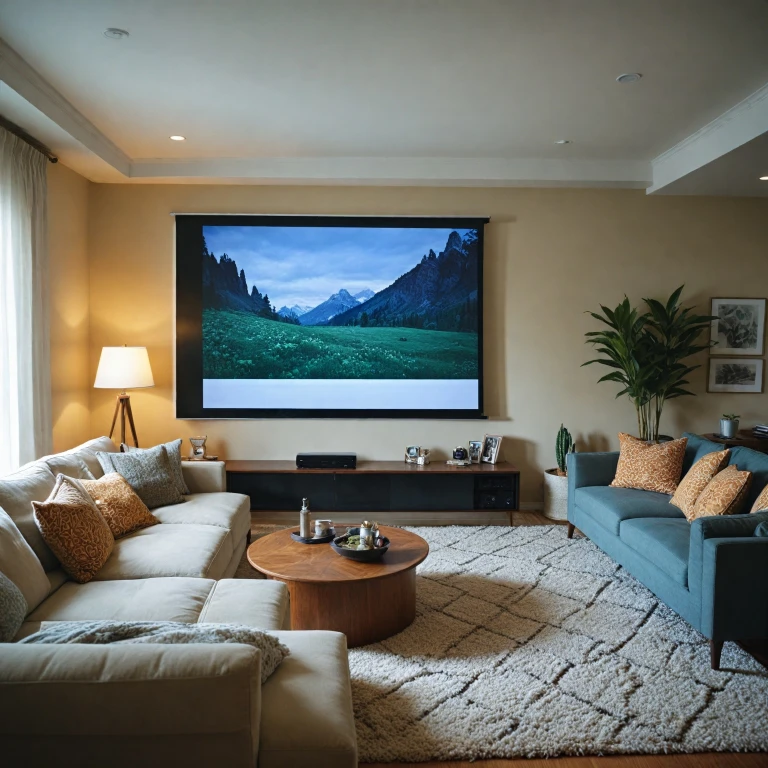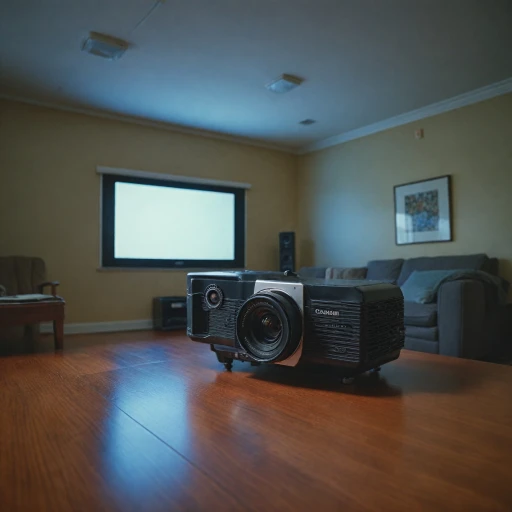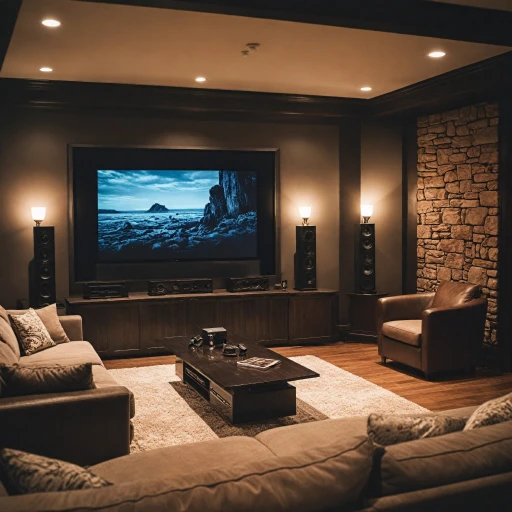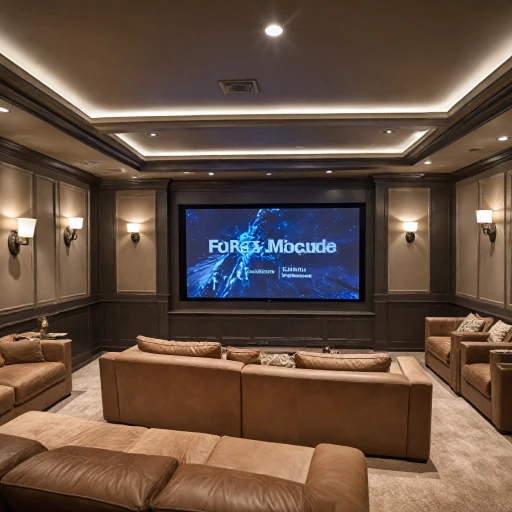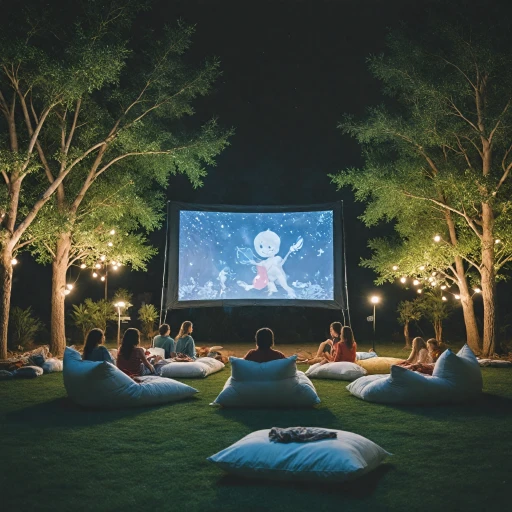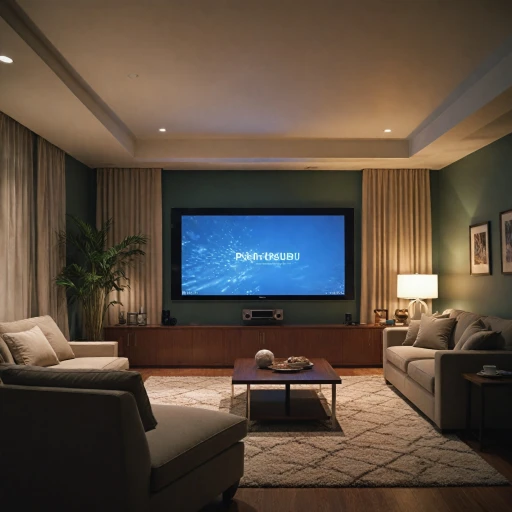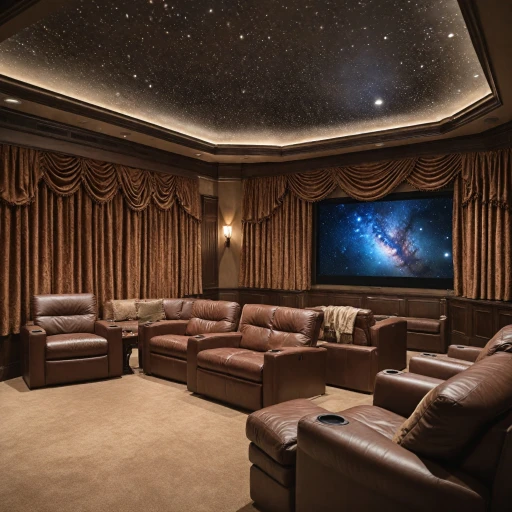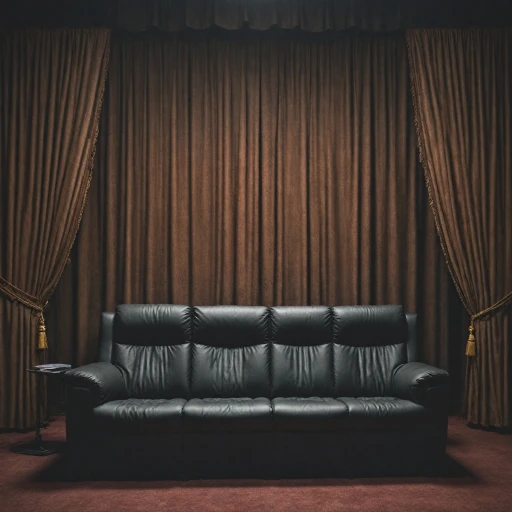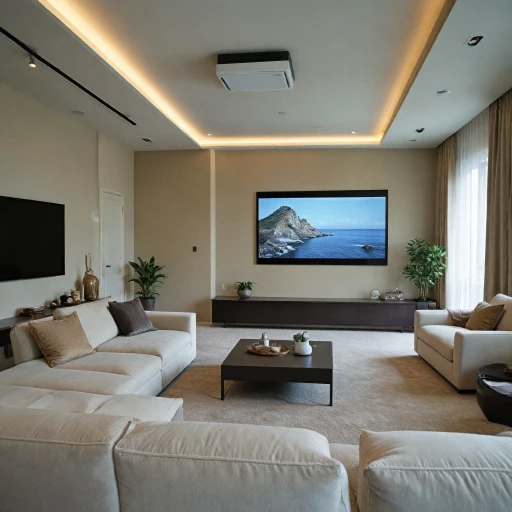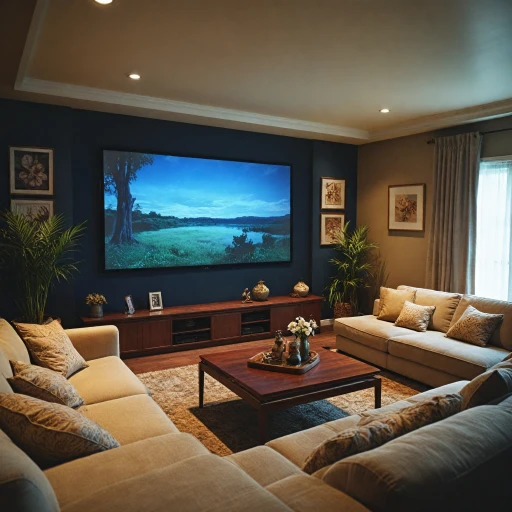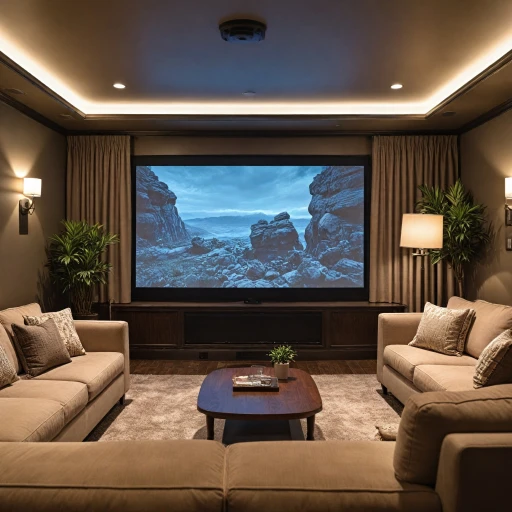Understanding Wall-Mounted Projector Screens
Delving into Wall-Mounted Projector Screens
The allure of a cinematic experience within the comfort of your own home starts with choosing the right equipment, and wall-mounted projector screens are pivotal in elevating your viewing encounters. When considering this setup, understanding its core elements aids in making an informed choice. A wall-mounted screen provides a dedicated display surface, crucial for maximizing your projector's performance. These screens come in various sizes, often measured in inches, catering to different room dimensions and viewing preferences. For optimal image clarity, many models offer a matte white screen surface to reflect light evenly, enhancing the vibrancy of your movies or videos. Additionally, wall-mounted options can vary in their technological sophistication. From manual pull-down variations to electric models, the choice between elite screens, silver ticket, or draper products influences the overall user experience and price. Features such as fixed frames or adjustable settings also play a role in determining which product best suits your needs. For more insights into how a fixed projection screen can impact your setup, explore this guide on enhancing your home theater experience with a fixed projection screen.Benefits of Wall-Mounted Projector Screens
Advantages of Using Wall-Mounted Projector Screens
Wall-mounted projector screens offer a range of benefits that can significantly enhance your home theater experience. These screens provide a dedicated surface for projection, ensuring optimal picture quality and a more immersive viewing experience.
- Space Efficiency: Unlike freestanding screens, wall-mounted options save valuable floor space. This is particularly beneficial in smaller rooms where every inch counts.
- Improved Picture Quality: The screen surface is designed to reflect light uniformly, reducing glare and enhancing the clarity of your video content. Whether you're using an HDTV matt white or a silver ticket screen, the quality is noticeably superior.
- Versatility: Wall-mounted screens are compatible with various projectors, including short throw and electric models. This versatility makes them a suitable choice for different room setups.
- Durability: Products like the Draper Luma and Elite Screens are built to last, with materials that withstand regular use and resist wear and tear.
- Cost-Effective: While the initial price may vary, investing in a wall-mounted screen can be more economical in the long run compared to frequently replacing less durable options.
- Professional Appearance: A fixed frame or wall ceiling installation offers a sleek, professional look that enhances the aesthetic of your home theater.
For those considering this option, understanding the benefits of an aluminum screen frame can further inform your decision. The right choice can transform your viewing experience, making every movie night a memorable event.
Choosing the Right Screen Material
Selecting the Appropriate Material for Your Projection Screen
Choosing the right screen material is crucial to maximize the performance of your wall-mounted projector screen. With numerous options available, understanding the differences can help you make an informed decision. One of the most popular choices is the matte white screen, known for its versatility and ability to provide excellent color reproduction in controlled lighting environments. This type of screen is typically favored for hdtv matt projection as it enhances vivid color delivery and minimizes light reflections, ensuring a clear and immersive viewing experience. If your viewing space is subject to ambient light, you might consider a silver ticket screen, which often includes materials designed to reject unwanted light while maintaining image quality. This type of screen surface is particularly advantageous if you cannot fully darken your viewing room. Another option is the white or grey material for fixed frame screens when dealing with varied lighting conditions or video presentations that require deeper black levels. Brands like draper luma and elite screens offer products with these attributes, providing both short throw and electric capabilities for different projector setups. To get the best results, matching the screen material to your particular home theater configuration is essential. Make sure to also consider additional factors such as room dimensions, screen placement, and projector features, such as throw distance and ceiling or wall mounting options, to ensure the optimized performance of your projector and screen combination.Installation Tips for Wall-Mounted Projector Screens
Simple Setup for the Optimal Viewing
When it comes to installing a wall-mounted projector screen, a few essential tips can make the process smoother and ensure the best possible viewing experience. Whether you’re working with an electric, manual, or fixed frame screen, these guidelines will help you get started.Choose the Ideal Location
Selecting the right spot for your projector screen is crucial. Make sure the wall you choose provides enough space to accommodate the screen size, whether it's a standard 100-inch or a larger projection. Consider the lights and how they interact with the screen surface. Opt for wall surfaces with matt white or matte white finish to reduce glare and enhance image quality.Correct Measurement and Alignment
Properly measuring and aligning your screen with the projector is key. Find the appropriate height for your wall or ceiling installation, ensuring the video projection aligns well with the audience's eye level. A short throw or long throw projector may demand different placement distances, so adjust according to your specific model’s requirements.Secure Mounting Solutions
Using reliable mounting brackets is essential for a sturdy installation. For electric screens, make sure the brackets are firmly attached, considering any additional weight from the electric components. Similarly, fixed-frame screens should be mounted evenly to avoid any sagging or distortion on the screen surface.Utilize User Manuals and Support
Refer to the product manual or contact the manufacturer for any specific installation instructions related to your screen model. Brands like Draper, Silver Ticket, and Elite Screens often offer comprehensive guidance and support. In case of difficulties, the support team can provide assistance to ensure a successful setup. By following these straightforward steps, you’ll prepare your space for a superb hdtv matt viewing experience, minimizing potential challenges. It's important to take your time with the installation, as a well-mounted screen contributes significantly to the overall performance of your home theater system.Maintenance and Care for Your Projector Screen
Essential Maintenance Practices for Long-Lasting Use
Maintaining your wall-mounted projector screen involves a few simple practices that ensure its longevity and optimal performance. Here are some key tips to keep your screen in pristine condition:
- Regular Cleaning: Gently dust the screen surface with a soft, lint-free cloth to remove any accumulated dust or dirt. Avoid using harsh chemicals as they may damage the screen's matte white finish.
- Protect from Ambient Light: While wall-mounted screens like Draper Luma or Elite Screens are designed to enhance image clarity, minimal ambient light exposure is recommended to preserve the viewing quality. Consider using blackout shades in your room for the best results.
- Avoid Physical Contact: Try not to touch the screen surface with your hands or other objects, as oils and dirt can deteriorate the projection quality over time.
- Check for Misalignments: Periodically inspect the screen's frame and mounting points to ensure everything is securely fastened. If adjustments are needed, handle them gently to maintain the product's integrity.
- Screen Material Care: Different materials, like matt white or hdtv matt, have specific care instructions. Refer to the manufacturer's manual for any specific guidelines related to your screen material.
- Safe Storage: If your setup includes a manual or electric retractable screen, make sure it is retracted safely when not in use, which helps in avoiding accidental damage.
Understanding the nuances of maintenance for both fixed frame and manual screens can prevent common issues, such as wrinkles or discoloration, which may require troubleshooting. A well-maintained screen not only enhances your viewing experience but also extends the life of your investment without the need for costly replacements.
Troubleshooting Common Issues
Resolving Common Problems with Wall-Mounted Projector Screens
Even the best wall-mounted projector screens can encounter issues from time to time. Knowing how to troubleshoot these problems can save you both time and money. Here are some common issues and their solutions:
- Wrinkles or Waves in the Screen Surface: This is often caused by improper installation or changes in humidity. Ensure your screen is mounted tightly and evenly on the wall. If the problem persists, consider using a fixed frame to maintain tension.
- Image Distortion: If your video appears distorted, it might be due to the projector's throw distance or angle. Adjust the projector's position to ensure it's aligned correctly with the screen. Short throw projectors can help if space is limited.
- Ambient Light Interference: Excessive ambient light can wash out the image on your projection screen. Consider using a matte white or HDTV matt screen surface, which can help minimize this issue. You might also explore screens designed to enhance contrast in bright rooms.
- Motorized Screen Malfunctions: If you have an electric screen and it's not functioning properly, check the power source and remote control batteries. For persistent issues, contact the product manufacturer for support.
- Screen Material Wear and Tear: Over time, the screen material can deteriorate. Regular maintenance, as discussed earlier, can prolong the life of your screen. If the material is beyond repair, consider replacing it with a durable option like a draper luma or elite screens product.
For further assistance, always refer to the manufacturer's manual or seek professional help. Regular maintenance and proper installation, as highlighted in previous sections, can prevent many of these issues from arising in the first place.
